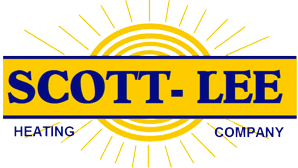December 13, 2023

How to Find the Best Indoor Air Quality Technology for Your Home
The air quality in your St. Louis, MO home could be far worse than the air quality outdoors. In fact, according to the U.S. Environmental Protection Agency (EPA), it’s likely two to five times worse. The good news is that it doesn’t have to be. Whether you live near a busy freeway or have multiple indoor pets, advanced indoor air quality (IAQ) technologies can help. However, the key to optimizing IAQ improvements is finding the right one for your household.
HVAC Air Filters: What They Can and Cannot Do
All heaters and air conditioners have pre-installed HVAC air filters. Equipment manufacturers install these components to keep the interiors of furnaces, ACs, and heat pumps protected and promote long equipment lifespans. These standard, pre-installed filters collect larger airborne particulates like dust motes, hair, textile and carpet fibers, and pet fur. However, due to their larger mesh, many allergens and contaminants pass right through them. Thus, while they do provide limited air quality benefits, these benefits are hardly enough to meet the IAQ needs of most households.
The Importance of Keeping Your HVAC Equipment Clean
According to HVAC equipment manufacturers, HVAC air filters should be checked monthly and changed every 30 to 90 days as needed. These recommendations exist as baseline requirements for protecting heaters, heat pumps, and air conditioners. Following them will ensure that large, lint-like clumps of debris do not detach from these components and enter the HVAC ducting or the indoor air. Routine filter changes keep heating and cooling equipment from overheating, short cycling, and experiencing many other filter-related problems. However, changing your filter more often won’t improve your IAQ.
Why Upgrading Your HVAC Air Filters Might Not Be Enough
All filters sold throughout the United States come with maximum efficiency reporting value (MERV) ratings. Ranging from one through 20, these ratings denote the effectiveness of filters in removing micro-fine particulates. With 20 being the highest possible MERV rating, residential HVAC systems can only accommodate filters with ratings as high as 13. With increasingly tight mesh, high-rated air filters inhibit airflow much like dirty filters do.
Standard, pre-installed filters typically have MERV ratings between six and eight. Upgrading to a filter with a MERV rating of nine to 13 will increase the number of allergens and contaminants removed, but it won’t eliminate all IAQ concerns. Moreover, without careful system adjustments and the benefit of air balancing, some filter upgrades can have an unfortunate impact on HVAC performance.
Low-Cost, Portable Units for Improving IAQ vs. Whole-House Technologies
If you’ve already upgraded your HVAC air filter and still have residents who are constantly sniffling, sneezing, or exhibiting other signs of nasal or respiratory distress, the next step is to use targeted IAQ technologies to eliminate the underlying contaminants. In the interest of saving money, many homeowners start with freestanding air purifiers, dehumidifiers, or humidifiers that treat the air in one room. This might seem like a good idea if only one person in your household has allergies, asthma, or another chronic respiratory ailment that makes them especially sensitive to the indoor environment.
Surprisingly, however, freestanding appliances aren’t always cheaper than integrated HVAC accessories that are installed in or connected to HVAC ducting. For instance, you might pay more for a high-quality, portable humidifier that regulates humidity in a limited space than you will for a whole-house humidifier that effectively regulates humidity throughout the entire building.
There Are Multiple Options in Integrated HVAC Accessories
Every home and household is unique. Although your surroundings are the same, your home and your neighbor’s home could be plagued by different pollutants. In part, IAQ needs are determined by:
- Household sizes and make-up
- The age and quality of building materials
- Indoor activities
- Building layouts
Larger households tend to have more moisture in their indoor air given that more people are breathing, talking, bathing, showering, and cooking in sealed environments. People with pets tend to have more airborne contaminants given that dogs, cats, and other companions are constantly shedding or leaving other forms of detritus behind. To address an incredibly diverse range of needs, IAQ equipment manufacturers offer media filters, whole-house air purifiers, air scrubbers, and more.
Whole-House Air Purifiers
Whole-house air purifiers are connected directly to HVAC air ducts. Rather than replacing HVAC air filters, they seamlessly support them. In systems with integrated air purifiers, HVAC air filters protect the interior of HVAC equipment and air purifiers protect building residents.
Air purifiers offer advanced air filtration. They have multiple layers of filter mesh, and their mesh is more tightly woven. This allows them to capture and retain many micro-fine particulates that pass right through both standard and upgraded filters, including dust mites, dander, airborne pathogens, and many chemical contaminants. Some air purifiers also have secondary functions that clean the indoor air. This activity is what distinguishes air purification from advanced filtration. With the right air purifier, you can minimize the transmission of illness and greatly reduce the concentrations of harmful volatile organic compounds (VOCs) and other chemical contaminants.
Media Filters
Media filters are installed in return air ducts. They work much the same as air purifiers, but they lack secondary functions for air cleaning. These units work well for consumers who need advanced air filtration but are less concerned about the presence of airborne pathogens and VOCs. As such, if you have someone living in your home with a terminal illness or compromised immunity, you might be better served with an air purifier. If your goal is improving your IAQ for aging adults, newborn babies, or people with chronic respiratory issues, a media filter could suffice.
Air Scrubbers
Air scrubbers got their start in clean rooms. Research facilities, laboratories, and hospitals have used these technologies for decades to clean indoor air and eliminate dangerous pathogens and chemical contaminants. If you’re worried about VOCs, viruses, or mold, air scrubbers are worth exploring. However, in the instance of mold, air scrubbers neither treat nor prevent the development of mold problems. Mold remediation requires the elimination of leaks or other moisture issues, sanitization of all affected building materials, and more.
Whole-House Dehumidifiers and Humidifiers
Whole-house humidification and dehumidification equipment establishes and maintains ideal humidity levels in the interior of homes. According to the EPA, the ideal humidity for residential buildings is between 30% and 50%. However, other research suggests that 40% to 60% is a better target in many areas. You might need whole-house dehumidification equipment if your indoor air constantly feels clammy, muggy, or oppressive, or if you have frequent problems with mildew and mold.
While HVAC systems offer limited humidity regulation, your heater and air conditioner are not designed to add moisture to the indoor air. You might need a whole-house humidifier if anyone suffers from dry nasal passages, stuffiness, or nosebleeds when your heater is on or if dry indoor air has led to warped or cracked building materials.
The Importance of Scheduling an Indoor Air Quality Assessment
The best way to determine the right IAQ technology for any home is by scheduling an air quality assessment. IAQ assessments measure indoor humidity, determine which contaminants are present, and measure the concentrations of contaminants. Not only can they help you determine the best technologies for improving your IAQ, but they can also point to ongoing sources of contaminants that must be eliminated. For instance, if your home has excessively high levels of radon, you might have a slab leak or an improperly covered sump pump.
Before installing new IAQ technologies, we always advise homeowners to schedule IAQ assessments. With a clear understanding of the exact allergens and contaminants you’re dealing with, you can make the right home improvements to protect residents’ health. You can also get the greatest possible returns from any integrated HVAC accessories you invest in.
For over 45 years, we’ve been proudly serving St. Louis, MO, and the surrounding area. In addition to exceptional heating and cooling services, we offer an exciting range of innovative IAQ technologies. Our clients can also turn to us for metalwork and HVAC zoning. To schedule an IAQ assessment for your home, contact Scott-Lee Heating Company now.
